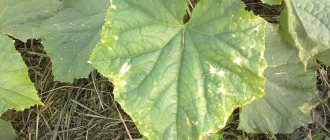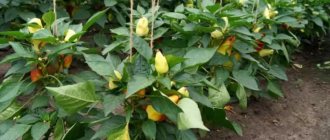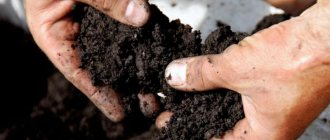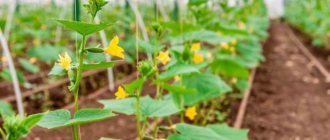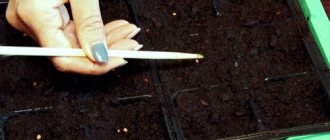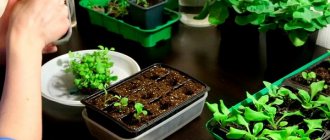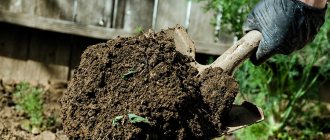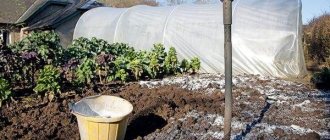All gardeners consider pepper to be a crop that is quite demanding in terms of conditions, especially temperature. But in a greenhouse environment, in soil protected by polycarbonate structures, you can reap very good harvests, having previously studied what kind of fertilizing during different periods of the growing season can achieve the greatest return from this crop.
Photo: https://agronom.expert/wp-content/uploads/2019/06/chem-podkormit-perets-v-teplitse-3-e1559921346208.jpg
What kind of soil does bell pepper like?
The handsome pepper is picky about the soil. It will not grow in clayey, heavy and acidic soils. But soil that allows air and moisture to pass through well is suitable. The soil should be rich in humus, nutrients, and fertile. The ideal option is loamy soil, light, but not too chernozem. The acidity level should be neutral.
The soil should contain moderate amounts of magnesium, phosphorus, iron, and manganese. All these nutrients are needed for the healthy development of the plant and good fruiting. In addition, pepper does not like cold soil, so the soil temperature should be at least 15 degrees Celsius.
Common mistakes
Let's look at what mistakes novice gardeners make when feeding peppers.
- Dry granular or powder fertilizer is scattered over the beds. The granules need to be dissolved in water, buried in the soil or scattered dry with abundant watering. Otherwise there will be no sense in such feeding.
- Root feeding is carried out immediately after planting. During the first 10-15 days, the planted peppers will take root. All this time, the roots will not be able to properly nourish the plant. Therefore, such feeding is pointless. If you need to urgently feed the plant immediately after planting, then it is sprayed.
- The soil is not moistened before fertilizing. In order for nutrients to be better absorbed, the soil under the peppers needs to be shed with warm water.
- Spraying is carried out in hot weather. First, nutrients evaporate quickly in the heat. Secondly, this can lead to sunburn of the leaf blades.
How to prepare soil in a greenhouse for planting peppers
Before moving pepper seedlings to a garden plot, to a greenhouse, you need to prepare the soil.
The first steps to prepare the soil are taken in the fall. Gardeners remove the soil in the greenhouse, about the size of a spade, cover the ground with humus and straw, and water it generously. When snow falls, it is transferred to the greenhouse and placed on the beds.
In the spring, the beds in the greenhouse need to be dug up and debris removed. Fertilize the soil with organic matter; rotted manure or humus will do. Usually a couple of buckets of organic fertilizer are taken per square meter. Seven days before planting, the beds are watered with a nutritious mineral solution.
Care must be taken that the soil is not acidic, that it contains enough nitrogen and phosphorus. Before directly planting the seedlings, the soil is shed with water.
When to plant peppers in a polycarbonate greenhouse
The seedlings move to the garden plot in mid-May. Gardeners believe that the best time to plant seedlings is the time when the coltsfoot heads begin to bloom.
There are rules that all experienced gardeners follow:
- Bushes are planted in the greenhouse at the age of 60 days.
- At the time of planting in the greenhouse, seedlings must have at least 10 leaves, and plant height must be at least 25 cm.
- Temperature conditions are important - the cold will kill tender bushes, so planting is allowed if the air temperature in the greenhouse is not lower than 10 degrees Celsius.
- Pepper loves warm soil, so the optimal soil temperature for planting seedlings is 15 degrees Celsius.
- The bed should be light.
- Seedlings should be planted on a cloudy day or at times when the sun is not at its zenith. That is, in the morning or in the evening hours.
Answers to frequently asked questions
When should you feed peppers?
The first planned feeding is carried out two weeks after planting the seedlings.
Which drugs are better?
If you have the opportunity, use wood ash. Of the mineral fertilizers, Azofoska is the most effective.
How to properly make holes for peppers: depth, distance
Pepper loves order, so the rows in the beds must be made with mathematical precision. If low-growing varieties of pepper are planted, then prepare the beds as follows: the planting sites for each plant are located at a distance of 25 cm from each other. If seedlings of tall varieties are planted, then the holes should be prepared with an interval of 30 cm from each other. Each row must be separated from the other by at least 70 cm.
It is better to grow seedlings in special peat cups; this makes planting in a greenhouse more convenient. The depth of the hole is no more than 20 cm.
Sometimes gardeners plant two bushes in one hole at once. The landing pattern looks like this:
- Make a hole 20 cm deep.
- Sprinkle with Fitosporin solution.
- Place 200 ml of compost and a tablespoon of superphosphate into the hole.
- Place the roots of 2 sprouts into the holes so that there is a gap of 2-3 cm between them.
- Cover the roots and crush them.
- The distance between holes is 30 cm, row spacing is 70 cm.
Folk remedies
In conclusion, I will share with you effective folk recipes for fertilizers for peppers that I tried in my garden:
- Wood ash. As I noticed, ash fertilizers contribute to the ripening of sweet and tasty peppers. I pour 1 tbsp. spoon of wood ash 2 liters of boiling water, stir, then leave for 24 hours. Then I filter it and use it for root watering.
- Onion peel. This folk remedy is not only a nutritious fertilizer, but also a natural disinfectant. I prepare an onion infusion: 20-30 g of peel for 4 liters of water. I leave it for about 5 days, filter it and use it for root feeding.
- Tea brewing. Feeding is good at the stage when your peppers have stopped developing. I use regular tea leaves: for 1 glass of tea leaves - 3 liters of boiling water. I leave it for 5 days, filter it - it turns out to be a top dressing not only for peppers, but also for other nightshades.
- Iodine + milk. Fertilizers based on regular medical iodine stimulate the growth of peppers, increase productivity, and improve taste. It is also an excellent antiseptic. For 1 liter of water - 100 ml of whey, 1-2 drops of iodine.
- Banana skin. These fruit peelings are an excellent source of potassium. I prepare the fertilizer like this: I put 2-3 peels in a jar and fill them with water. I leave it for 3-4 days, after which I use liquid for root fertilizers. There is another way: dry the skins for a year and grind them into powder. Then apply it dry to the soil.
- Egg shell. An excellent vitamin composition for peppers can be prepared using ordinary eggshells. I soak finely crushed shells from 3 eggs in 3 liters of heated water. I cover the mixture loosely with a lid and let it sit for 3 days. The readiness of the fertilizer can be judged by the cloudiness of the liquid and a sharp unpleasant odor.
- Ammonia (ammonia solution) A remedy for yellowing of leaves, slow growth, for the prevention of pests and fungal infections. For root feeding: per 1 liter of water - 1 teaspoon. spoon of substance. For spraying: per 1 liter of water - ½ teaspoon. spoons of alcohol.
- Hydrogen peroxide. The product does not contain nutrients, but is able to saturate dense soil with oxygen, which will “revive” the seedlings well. For 1 liter of water, 3-5 drops of peroxide are enough. By the way, I treat pepper seeds with the same solution before sowing.
- Nettle. This weed (especially when collected young) is a powerful growth stimulator not only for peppers, but also for all other crops. I prepare it for greenhouse seedlings: I put 100 g of dried leaves in a three-liter jar and fill it with warm water up to the shoulders. I take it to a warm place - as soon as the mass begins to ferment, I wrap the neck with cling film and let it sit for about 2 weeks. I mix and shake the mixture daily. The finished concentrate will smell like fresh manure. For seedlings, I dilute it with water 1:2, add 2 tbsp. spoons of ash. This nettle fertilizer can be stored for up to 2 months in a dark and cool room.
banana skins for fertilizer
onion infusion for the garden
ash as a fertilizer
Now you know several effective recipes for fertilizers for greenhouse peppers - mineral, natural, store-bought complex and folk, prepared from scrap materials. For the desired effect, adhere to a clear feeding schedule, take into account the rules for their application. Be sure to monitor the condition of your peppers in order to detect a deficiency or excess of one or another element in time.
How to treat planting holes
Before planting seedlings in the greenhouse, the formed holes must be disinfected. Many gardeners use a pink manganese solution for this. You can also take a solution of copper sulfate. It is prepared like this: a tablespoon of the drug is dissolved in a bucket of water. Spill the holes and wait three days. After this period, seedlings can be planted, but before that, nutritional components are placed in the holes.
We recommend using multi-component organic fertilizers as nutrients, for example OrganicMix. This is a powerful organic rooting agent. Provides maximum survival rate, increases immunity and tone of the plant. OrganicMix fertilizers for plant replanting, thanks to its composition, restore soil fertility. It contains fermented legume meal, low-fat fish and bone meal, alfalfa meal, high content of seaweed, amino acids and vitamins.
Responsible for high-quality and rapid strengthening of the root system of young plants, accelerates root growth. After such feeding, plants take root better in open soil and tolerate temperature changes and cold more easily.
Mineral fertilizers
Minerals are one of the most important components that affect the quality of the fruit as well as its quantity. Mineral components include:
Nitrogen
Peppers need it to gain green mass, form ovaries, and ensure the growth of stems.
Phosphorus
The element promotes the development of the root system, is responsible for the formation of fruits and their ripening period.
Potassium
This compound is considered a fundamental component for the appearance of peppers. Potassium affects the color intensity, correct shape and size of the vegetable.
Magnesium
The substance is an additional source of nutrition for the root system, and also helps maintain the mineral balance in the soil.
What to put in the holes when planting peppers
Experienced gardeners know that it is better to use organic fertilizers. Therefore, when planting seedlings in the holes, put:
- Green manure. They are specially sprouted in the fall.
- Ready-made complex fertilizers with a high content of amino acids (for example, OrganicMix)
- Humus, compost. When planting, just put a handful of organic fertilizer in the hole.
- Acidity neutralizer. Pepper does not like soil with a high level of acidity, so you need to use diatomite, 2 tablespoons per hole.
- Vermicompost. Rich in potassium and calcium, phosphorus and magnesium, vermicompost will help the plant be healthy. There are a couple of handfuls per hole.
Gardeners additionally use tools that gardeners have used for a long time:
- Feathers. Pepper needs molybdenum, and feathers are the natural material that contains it. The feathers are placed in the hole like this: a feather on the bottom, a layer of earth on top, everything is watered with a nutrient solution. To prepare the solution, use 2 tablespoons of Fitosporin per 10 liters of water. Seedlings are planted in the hole prepared in this way.
- Banana peel. The peel must first be dried and crushed. The fertilizer is poured into the hole, then sprinkled with soil, then watered with a nutrient solution and then the seedlings are planted.
- Egg shells. They need to be crushed, this fertilizer will work as a soil deoxidizer. Crushed shells - 100 g - pour into the hole before planting.
- Onion peel. Pre-prepare the husks by pouring boiling water over them and keeping them there for a while. Then the bottom of the hole is lined with husks, covered with a layer of soil into which fertilizers have already been mixed, and filled with water.
A complex “filling” of the hole is used. 150 g of humus, a tablespoon of wood ash and bone meal, as well as mineral fertilizer are placed in each hole. This could be Fertika universal or another fertilizer of similar composition. The fertilizer mixture must be thoroughly mixed right in the hole, adding soil, then water the hole, then plant the peppers.
If you use ready-made complex fertilizer for replanting OrganicMix, then 10 g of fertilizer is mixed with soil at the bottom of the hole. Water well and carefully place the root system of pepper seedlings in the hole, sprinkle with soil. Another 10 g of fertilizer is sprinkled on top around the plant, loosened and watered again.
After planting the seedlings, the soil is mulched.
Read our articles:
- Annual lupine as green manure
- White mustard like green manure
Basic rules for applying fertilizers for peppers
There are two types of fertilizing: root and foliar.
- Nutrient solutions, dry granules of long-lasting fertilizers and humus in the form of mulch are added under the roots.
- Foliar feeding is spraying the leaves of a plant with a nutrient solution.
Important! The spraying solution is prepared in a concentration that is half as weak as for root watering. Treatment of plants must be carried out in cloudy weather or in the evening to avoid burns of foliage.
The standard frequency of fertilizing sweet peppers is once every 2 weeks, starting from the age when a pair of true leaves appear. The composition of the soil in which the plant is planted matters. If the soil is fertile or has been thoroughly fertilized, the amount of fertilizing is reduced to 3-4 per season.
Important! Watering with a nutrient solution at the root is carried out only on damp soil. The peppers are pre-watered with ordinary clean water so that the roots do not get burns from the fertilizer.
Plants need a full range of nutrients, but nitrogen, potassium and phosphorus are especially important.
- Nitrogen fertilizers affect the growth of green mass. Peppers need nitrogen at the very beginning of the growing season, when the stem and leaves are actively increasing in size.
- Potassium and phosphorus affect flowering and fruit set. These elements are given to the plant during flowering and harvest ripening.
There are also substances that the plant needs in microdoses: manganese, zinc, iodine, magnesium, iron. Their deficiency weakens the plant and reduces its resistance to adverse conditions and diseases.
How to mulch the ground after planting
Is it possible to do without mulching peppers? It is possible, but then there is a danger that the plants will suffer from negative external factors: diseases, temperature changes, etc. Therefore, experienced gardeners try to protect tender seedlings with mulch.
Mulching helps:
- Increase productivity.
- Reduce the period of fruit ripening.
- Protect the soil from drying out and moisture deficiency.
- Maintain soil structure.
- Saturate the soil with useful substances if organic mulch is used.
Gardeners can mulch with both organic and inorganic materials.
| Organic mulch: | pros | Minuses |
| Rotted sawdust | retain heat well in the soil, and on a hot day serve as protection against overheating | sawdust soil does not receive nutrients |
| Cut and dried grass | the simplest and most affordable material, saturates the soil with nutrients and retains moisture well | The lifespan of such mulch is limited; the layer must be at least 10 cm |
| Straw | good reflector of sunlight, protection from the Colorado potato beetle | you need a very thick layer - up to 20 cm |
| Humus | Natural organic matter saturates the soil with useful substances, maintains the desired temperature, protects from frost | Does not retain moisture, peppers will require frequent watering |
| Manure | Retains heat, provides nutrients to the soil, protects against pests | Does not retain moisture, requires frequent watering |
| Inorganic mulch: | ||
| Polyethylene | durable, long lasting, retains heat | does not allow moisture to pass through |
| Black film | Durable material, breathable, moisture permeable | does not enrich the soil with useful substances |
| Non-woven white fabric | Breathable, durable, provides frost protection | It does not allow moisture to pass through well; the pepper needs frequent watering. |
Organic mulch is more popular because it does not obstruct air flow into the soil, saturates the soil with nutrients, and gradually decomposes. However, organic mulch is only for the season, when inorganic cover can be used year after year.
You need to mulch the soil at the end of May, at which time the soil has not yet warmed up enough. Mulching work should be carried out in cool weather. Layer – at least 5-7 cm.
During fruiting
During fruiting, for rapid fruit ripening, it is recommended to use potassium fertilizer in combination with nitrogen fertilizers. Potassium nitrate is a substance that contains both potassium and nitrogen. It is diluted in an amount of 15 grams per 10 liters and watered onto mature plants under the bush. Potassium nitrate is suitable for irrigating foliage, the effect is the same as with root feeding.
Ammonium sulfate will replenish the lack of nitrogen in the soil, and sulfur will extend the fruiting period and improve the taste of the fruit. The substance can be added to mulch (40 grams per meter of land). The fertilizer is completely safe for peppers; all components are quickly distributed in the soil, without the formation of toxins and by-products.
How to water peppers after planting
It is important to follow the plant's watering schedule. You need to water at least once every five days; each adult plant should receive 2 liters of water. One liter is enough to water young seedlings. Before watering, the water needs to be settled; the water temperature needs to be comfortable; it is better to use warm water. Water carefully, trying not to get on the delicate leaves, under the roots.
In addition to traditional watering, fertilizing with nutrient solutions is important.
The most popular top dressings:
- With chicken droppings. 1 part of the litter is diluted in 20 parts of water, watered with this solution, and a liter of solution goes under each bush.
- With mullein. Mullein is diluted with water in a ratio of 1:10. This watering is good when the first ovaries appear.
- With a mixture of superphosphate, potassium and ammonium nitrate. To prepare a solution per liter of water you will need superphosphate - 6 g, potassium - 2 g, ammonium nitrate - 1 g. You can also use ash fertilizer.
- With organic fertilizer OrgankMix. To feed, dissolve 50 grams of universal fertilizer in a bucket of water and pour 0.5 liters under the roots.
You may be interested in:
- How to grow bell peppers
- DIY mulch
Natalia
Author
Ask a Question
Proper use of fertilizers and fertilizing, comfortable drinking conditions, fertile soil, a pleasant temperature of 22 degrees Celsius, sufficient light - and the peppers will be blissful in the garden. This means that a high harvest is guaranteed, and the lunch menu will include delicious dishes made from peppers grown in your own garden plot. And for winter, homemade canned vegetables will be prepared, where one of the main ingredients will be the beautiful pepper.
Advice from experienced gardeners
In the greenhouse, peppers are regularly inspected and the required fertilizing is given in a timely manner, following the recommendations:
- watering solutions are carefully poured under the roots, without splashing on the leaves and stems;
- for solutions take warm water, above 20°C;
- if there is prolonged cool weather, the peppers are supported with potassium;
- When using different fertilizers or pesticides in one tank mixture, you need to know exactly how compatible they are.

